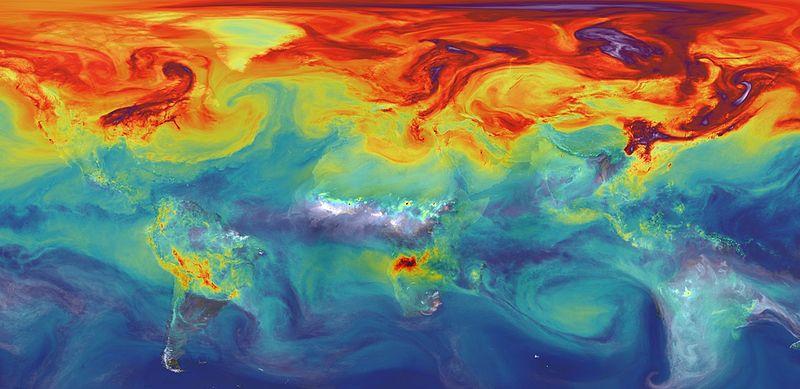Seasonally adjusted greenhouse gas emissions from industries and households fell 11 per cent over the September 2021 quarter according to new Stats NZ figures.
That followed a 4.7 per cent increase in the June 2021 quarter.
The September 2021 quarter fall in gross emissions was largely due to a reduction in coal use for electricity generation. COVID-19 alert level restrictions and nationwide/regional lockdowns also contributed.
Emissions decreased across all industry groupings in the September 2021 quarter, as COVID-19 restrictions took hold in the second half of the quarter.
The largest industry contributors to this decrease were electricity, gas, water, and waste services, down 33 per cent (969 kilotonnes); manufacturing, down 10 per cent (273 kilotonnes); and transport, postal, and warehousing, down 17 per cent (156 kilotonnes).
“After reaching a quarterly time series high in June 2021, the electricity, gas, water, and waste services industry decreased emissions by 33 per cent. This is mainly due to a switch from coal use to hydro generation,” environmental economic accounts manager Stephen Oakley said.
In the September 2021 quarter, 84 per cent of our electricity was generated from renewable sources compared with 75 per cent in the previous quarter, the Ministry of Business, Innovation and Employment reported in its New Zealand Energy Quarterly.
Manufacturing and transport, postal, and warehousing industries also saw large emissions decreases of 10 and 17 per cent respectively, due to continuing COVID-19 restrictions resulting in lower economic activity.
In the year ended September 2021, total emissions (industry and household) decreased 0.4 per cent (346 kilotonnes) to reach a total of 81,137 kilotonnes of carbon dioxide equivalents. During that year, the June 2021 quarter recorded the largest increase in emissions, up 4.7 per cent (965 kilotonnes). The September 2021 quarter saw the largest decrease (2,405 kilotonnes).
The Science Media Centre asked experts to comment on the data.
- Dr Hinrich Schaefer, Atmospheric Scientist, NIWA, comments:
“The prominent drop in greenhouse gas emissions is clearly linked to protection measures against Covid-19, since over the last six years a similar decrease occurred only during the 2020 lockdown period.
“Aotearoa-New Zealand will have to continually reduce emissions at similar rates over the next decades in response to the climate crisis. Therefore, the breakdown of the current drop holds lessons how to cut greenhouse gases most efficiently, even though such lessons require further thought and research.
“After the 2020 lockdown, emissions dropped but rebounded right away. Identifying which type of emissions were avoided through the lockdowns in the long run can show us effective and sustainable mitigation targets.
“Compared to 2020, this year’s emission decrease went with a lower loss of GDP, probably because the lockdown was largely restricted to the Auckland area. The primary sector and mining maintained their emissions, which are dominated by the gases methane and nitrous oxide. More fundamental and structural change will be needed for long-term greenhouse gas reductions from these industries.
“The biggest emissions drop is in the infrastructure of industrial activities (energy and water supplies, waste) and is three times as large as the drop in emissions directly attributed to manufacturing. This points to big gains in long-term emissions reductions if the energy infrastructure of our industry is improved. Construction and transport are the other sectors with large reductions in emission. This shows the potential in sustainable reductions by restructuring transport and the need to move to low-emissions materials and processes in construction.”
No conflict of interest.
- Distinguished Professor Robert McLachlan, School of Mathematical and Computational Sciences, Massey University, comments:
“It’s welcome to see a fall in emissions from electricity generation. As well as the shift from coal to hydro, new wind farms began operation. 2021 saw a record level of new wind and solar projects announced so we can expect electricity emissions to continue to fall and for fossil fuel power stations to be decommissioned over the next few years.
“It is interesting to see industrial emissions falling five per cent while their GDP increased 3.5 per cent. Is this a Covid-related shift, or the start of decarbonisation?
“The bigger picture is unclear due to Covid. Annual emissions were similar to the previous year at 81 million tonnes CO2e, down on pre-Covid levels of 85 million tonnes. This is mostly due to international aviation, which Stats NZ includes where the Ministry for Environment generally does not. As no measures are in place yet to address international aviation emissions, this can be expected to bounce back post-Covid.
“Apart from lockdowns, there appear to be underlying six per cent annual increases in household transport emissions. They likely have not even peaked yet, let alone begun a decline. The ground-breaking Clean Vehicles Plan is a first step to addressing these but a lot more needs to happen as well. This is an area where the Emissions Reduction Plan (due in May) and the promised ‘climate budget’ can make a difference.”
No conflict of interest.
- Dr Olaf Morgenstern, Principal Scientist – Atmosphere and Climate, NIWA, comments:
“My comment would be that drops of this order, and repeated in the years to come, are required if we are to reach carbon neutrality by 2050. Covid-19 is an unusual, and unusually disruptive reason for these drops. We won’t want to resort to lockdowns to reach carbon neutrality. Also the reduction in coal burning at Huntley, the fossil-fuel power plant in the Waikato, may be due to relatively good hydropower generation in the South Island.
“So I would not read too much into these figures. They don’t reflect sustained changes in our economy that would indicate that we’re on a path to carbon neutrality.”
No conflict of interest.
Sources: Stats NZ and the Science Media Centre












